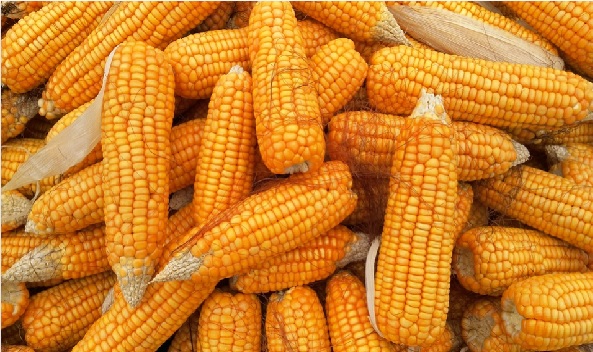China
is facing a massive oversupply of low-quality corn, due to the corn purchase
strategy, which was cancelled in 2016. Authorities are actively looking for new
markets and demand for corn, to process the inventory in a profitable way. Some
of the new downstream markets include fuel ethanol and corn sugar.

Source: Pixabay
After
the withdraw from the corn stockpile policy in China 2016, the country is
suffering under large inventory without an adequate usage of the mostly
low-quality corn. Not suitable as animal feed, the largest agricultural nation
has to find other ways of getting rid of the huge stockpile, which has pushed
the price in China downwards for the last years.
According
to CCM, China’s government states, that the best way to reduce corn stockpile
without getting in conflict with existing industries is by creating new demand
for corn. The market of corn starch and MSG is already saturated, which
disqualifies this area for increasing corn consumption This is why many
departments are increasing their efforts to search for more opportunities in
corn consumption and finding downstream markets.
Another
measurement is to cut down the planting area of corn, to reduce the supply and
let the existing inventory get consumed.
The
following three points are indicating different ways of creating more demand
and reduce corn oversupply in China.
First
of all, the biofuel industry in China is one of the most promising downstream
markets for corn. Corn of lower quality can be processed into fuel ethanol,
which is one of the main biofuel products currently. According to CCM,
automobile fuel, which contains 10% of corn ethanol, is witnessing increasing
promotion and demand in the northern regions of China.
One
indicator of this new trend is China’s textile and clothing manufacturer Shiqi
Group is going to create a gigantic plant for a yearly production of 300,000
tonnes of fuel ethanol in June 2017. The project is supported and partly
invested by the government of Kailu County and Inner Mongolia and will cost
more than USD175 million. The enterprise takes advantage of the short distance
to China’s main corn planting area in Inner Mongolia and states a huge
confidence in China’s fuel ethanol market.
Related
to the efforts in reducing the gigantic corn storage in China, the ethanol
industry is enjoying some preferential benefits from the government. The first
policy in this direction was implemented in August 2016 with a reduced export
tax rebate rate of ethanol and other corn products to 13%, according to CCM.
Later the year on November, several provinces in China, which are the main corn
planting areas, have started giving subsidies for corn deep processing
productions. On December, as part of the new Catalogue of Industries for
Foreign Investment, those investments have been deregulated, especially for the
corn deep processing and fuel ethanol industries.
Another
possible downstream market is the xylitol production. This corn sugar is not
popular in China at the moment, which would need a lot of promoting and marketing
the product to increase awareness and convince customers. Furthermore, the
sweetener is mostly suitable for people with high blood sugar in general.

Finally,
authorities are recommending the production of corn starch films, usable in
modernised greenhouses. Corn starch films are an ecological alternative to
plastic films, which are used widely at present. In addition, the processing of
corn starch into some starch granulate also increases the storage life, which
benefits the purpose even more.
While
the responsible authorities are searching for new demand, companies have in
mind, that soon after the inventory of corn is used up, the production is
likely to decrease or stop completely again. Hence, investments in long-term
projects are very unlikely. Local governments are asking experts in science and
technology for opinions to find proper and reasonable solutions for China’s
corn inventory problem.
Corn purchase policy
In
the year 2016, China’s government decided to cancel its purchase policy of corn
for temporary storage and established a subsidy system for corn producers in
China. This followed the principle of letting the market determine prices and
delinking subsidies from prices. This, to some extent, relieved the problems of
continuously rising corn prices, stockpiles, subsidies and losses in China.
Currently,
corn stockpiles for temporary storage still surpass 230 million tonnes in
China. The state will take grain safety and rulemaking into consideration when
it promotes new channels to reduce corn stockpiles. According to CCM, in the
future, will be a series of policies issued to support corn stockpile reduction
by multiple ways.
According
to CCM’s price monitoring, the price of corn is falling since the second half
of 2015. When the Chinese government announced the end of its corn storage and
subsidy policy, the corn price dropped even faster. As a result, In the middle
of February 2017, China’s corn price witnessed a year on year decrease by 28.7%
About CCM
CCM
is the leading market intelligence provider for China’s agriculture, chemicals,
food & ingredients and life science markets.
Do
you want to find out more about the corn market in China? Try our
Newsletters and Industrial Reports or join our professional online platform today and get insights in Reports, Newsletter, and Market Data at one place.
For
more trade information of corn products, including Import and Export analysis
as well as Manufacturer to Buyer Tracking, contact our experts in trade
analysis to get your answers today.
Looking
for a convenient way to get comprehensive and actual information as well as a
platform to discuss with peers about the latest agricultural industry and
market trends? Simply subscribe to our YouTube Channel and join our groups on LinkedIn and Facebook.